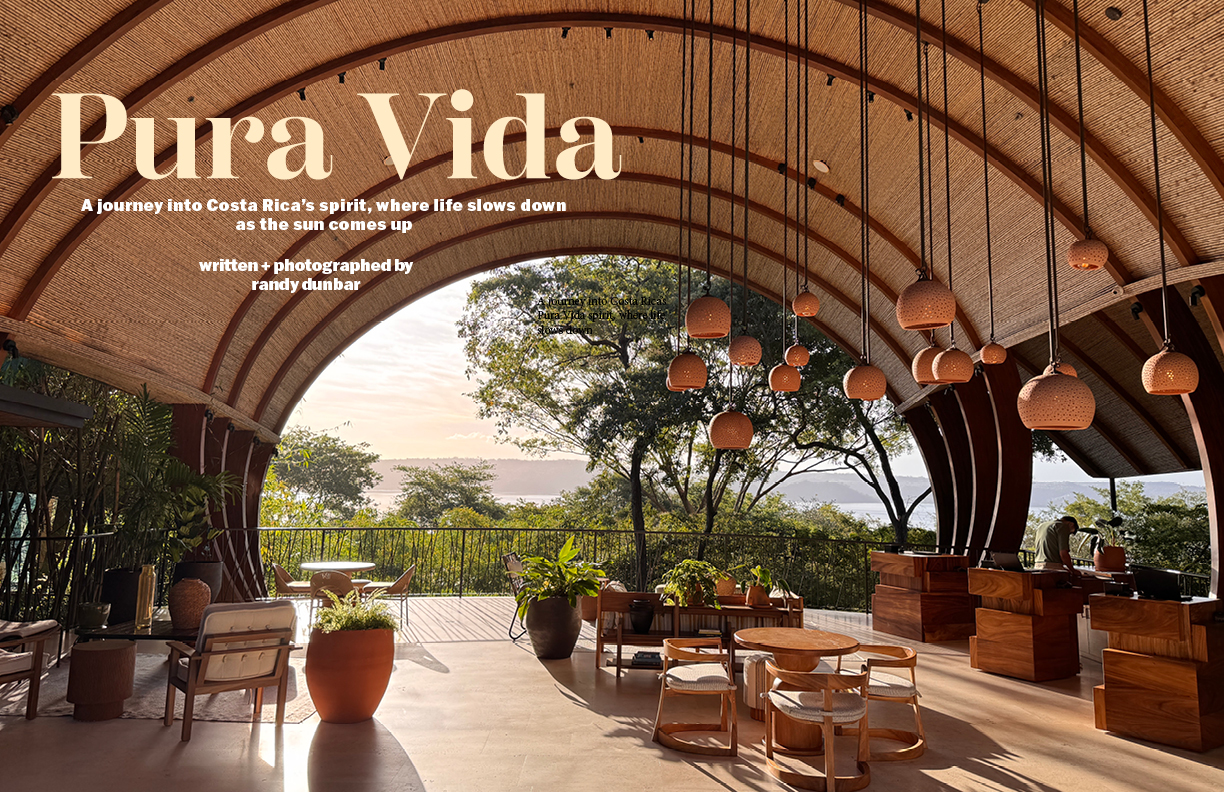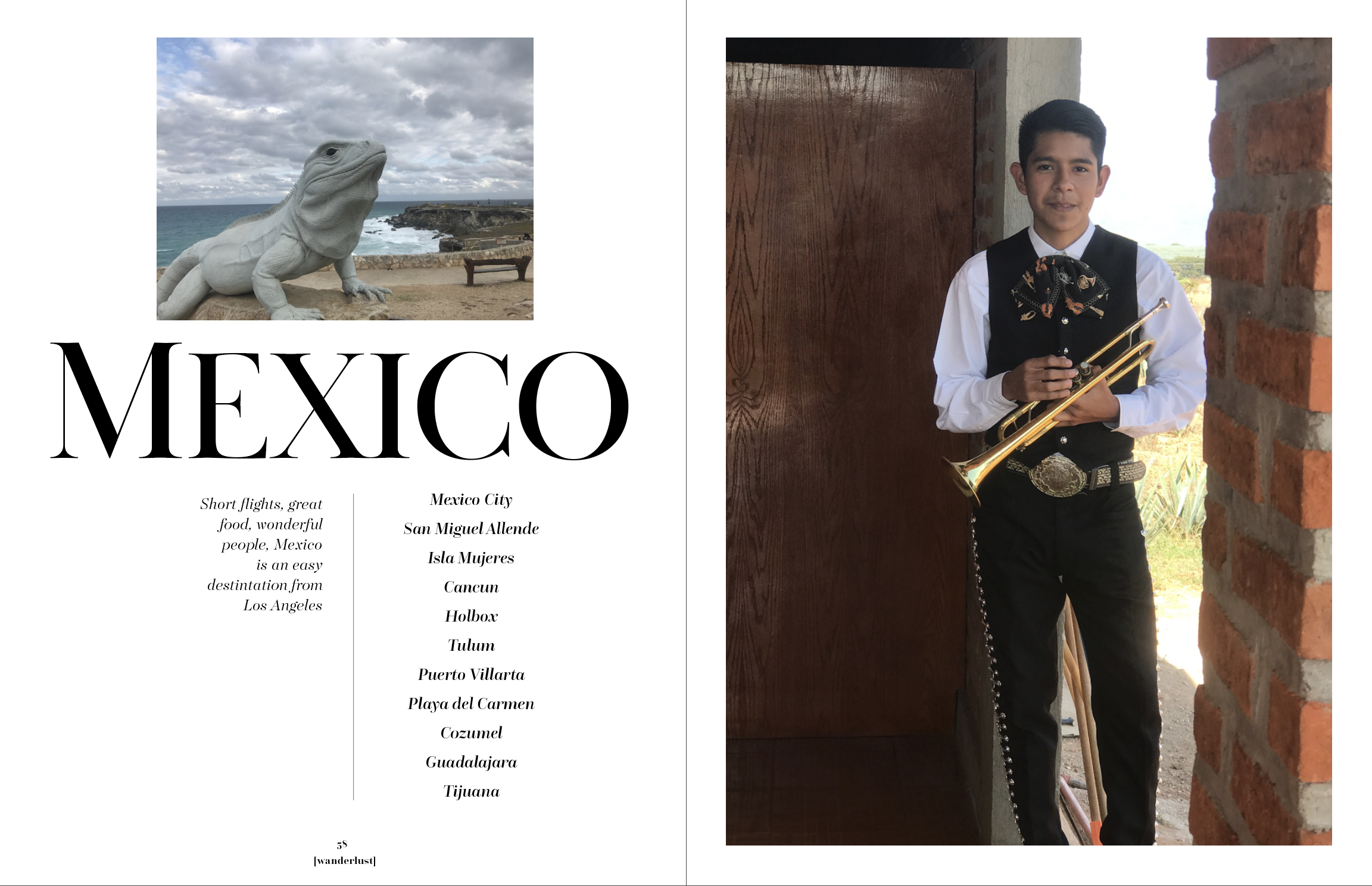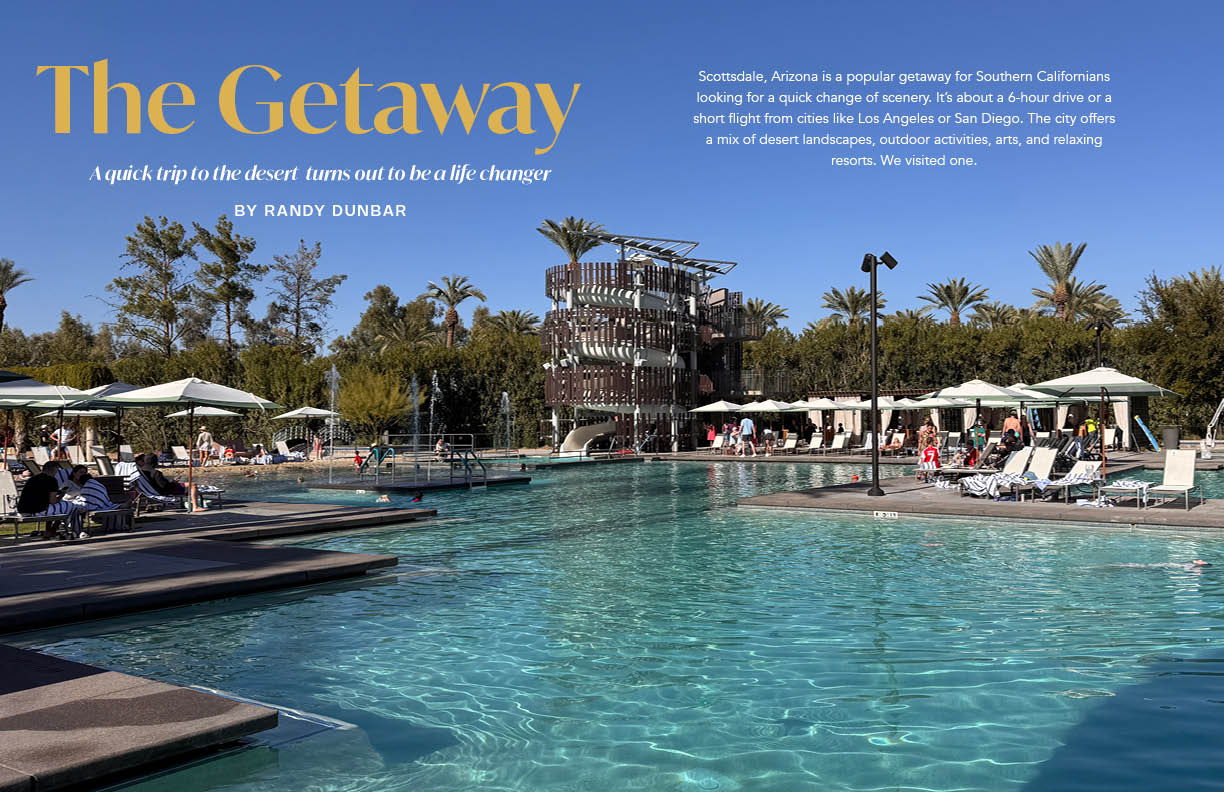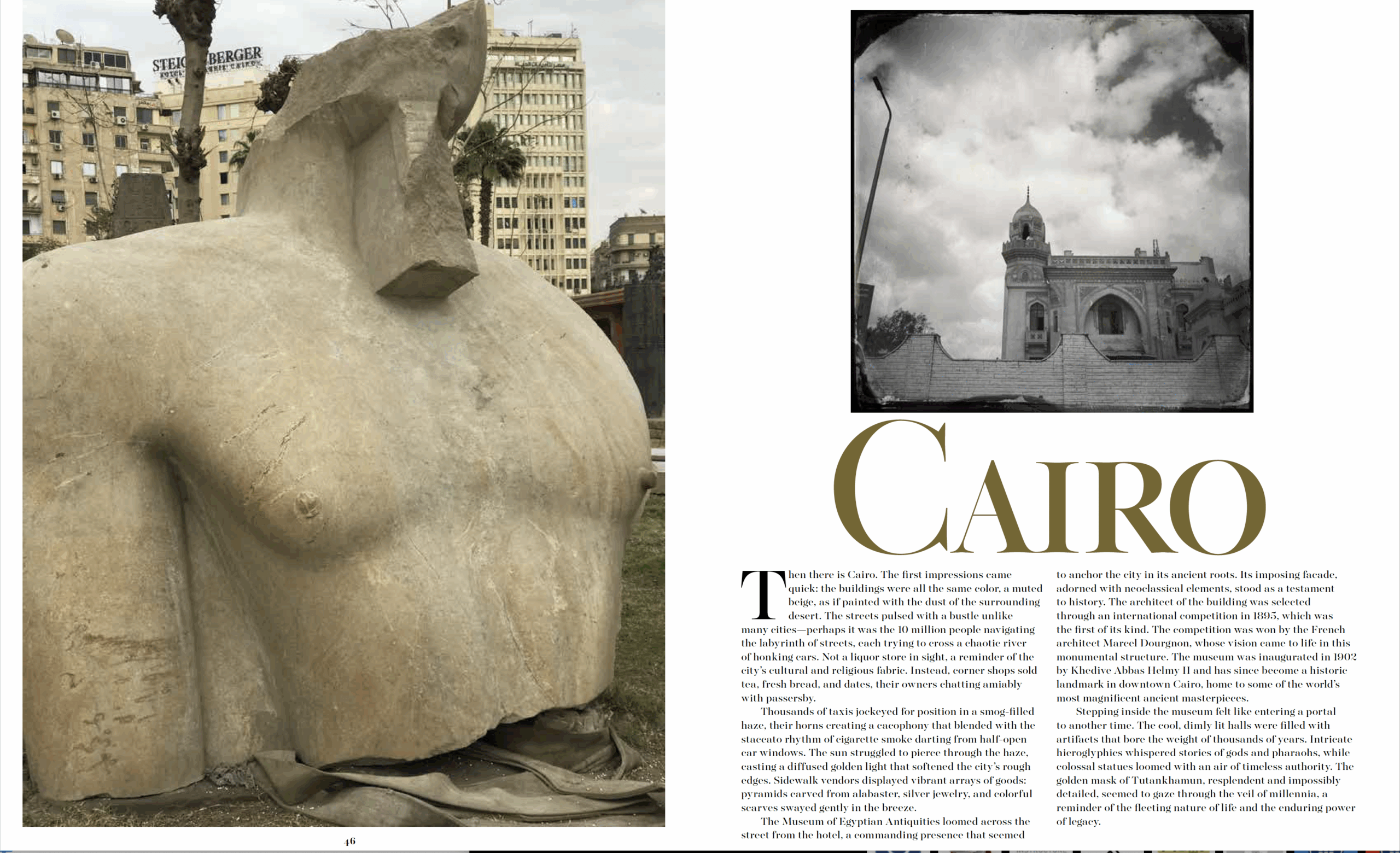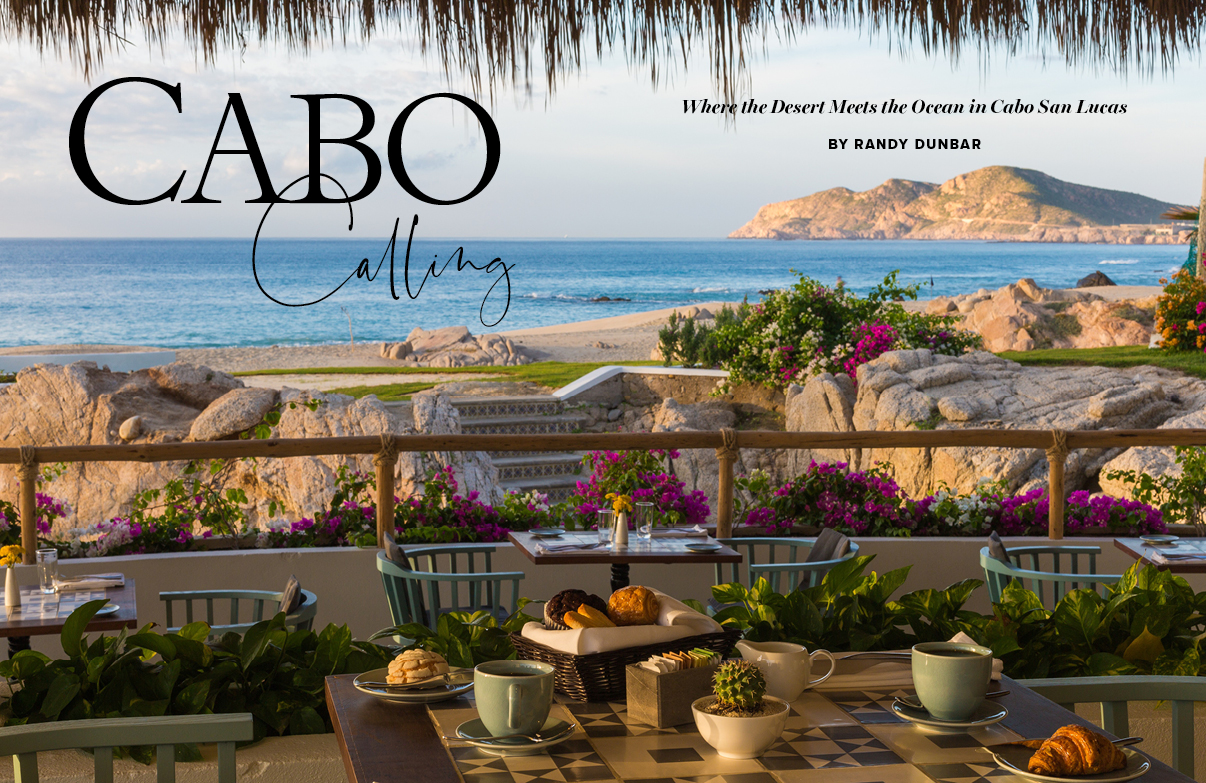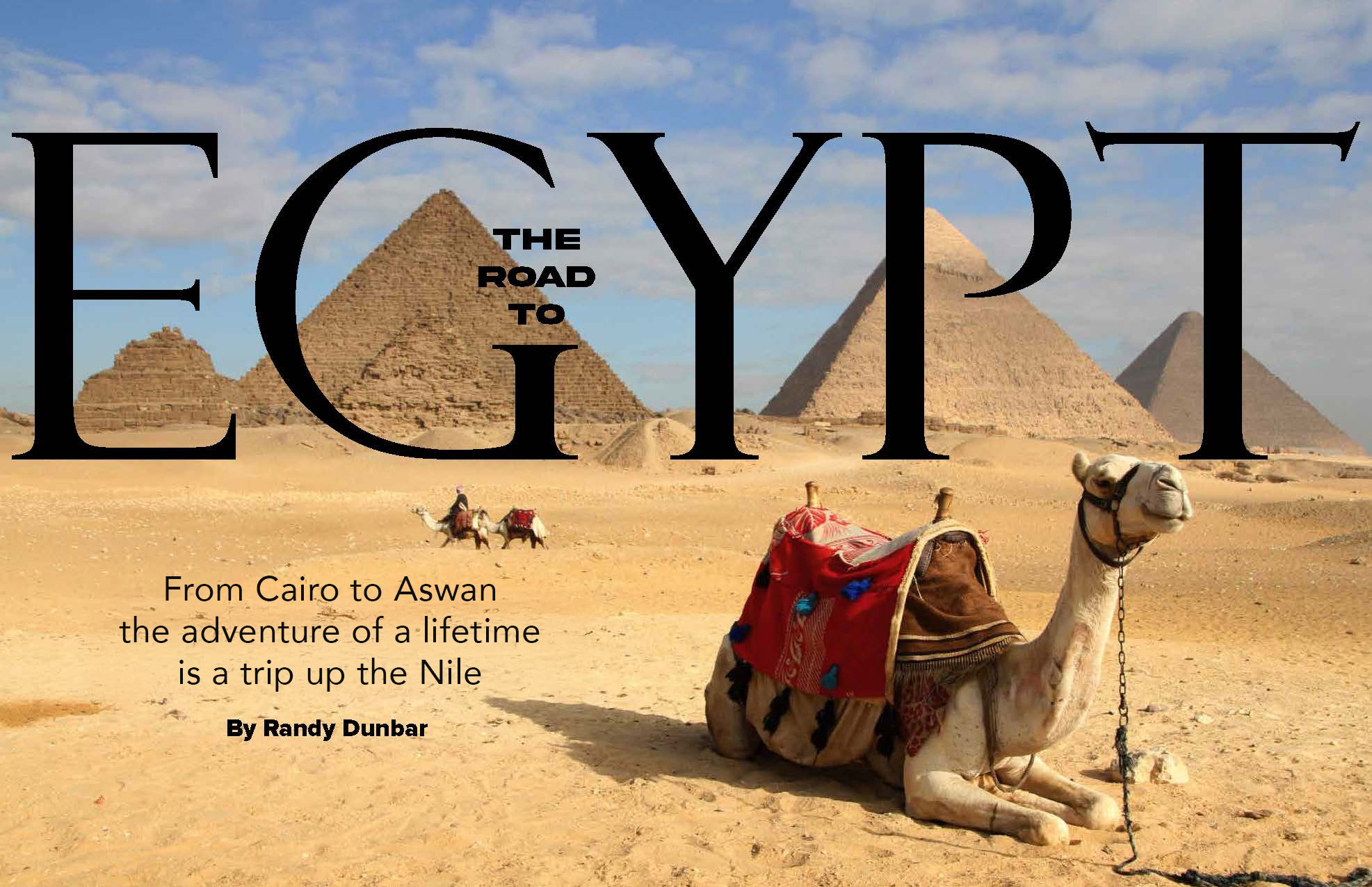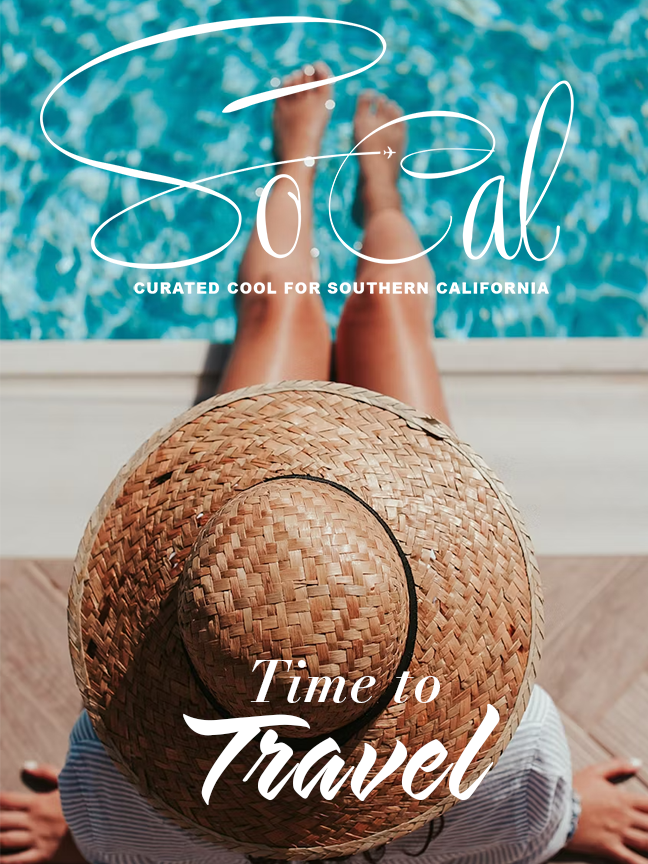DESTINATIONS BY DUNBAR
TRAVEL STORIES WRITTEN & PHOTOGRAPHED
BY RANDY DUNBAR
Randy Dunbar is a renowned creative director and travel writer who blends storytelling with strategy. With a sharp eye for detail and a deep curiosity about the world, he turns places into narratives and ideas into campaigns. From leading creative teams to documenting off-the-grid destinations, Randy brings clarity, style, and purpose to everything he creates. His work lives at the intersection of design, content, and culture—always with a passport ready.
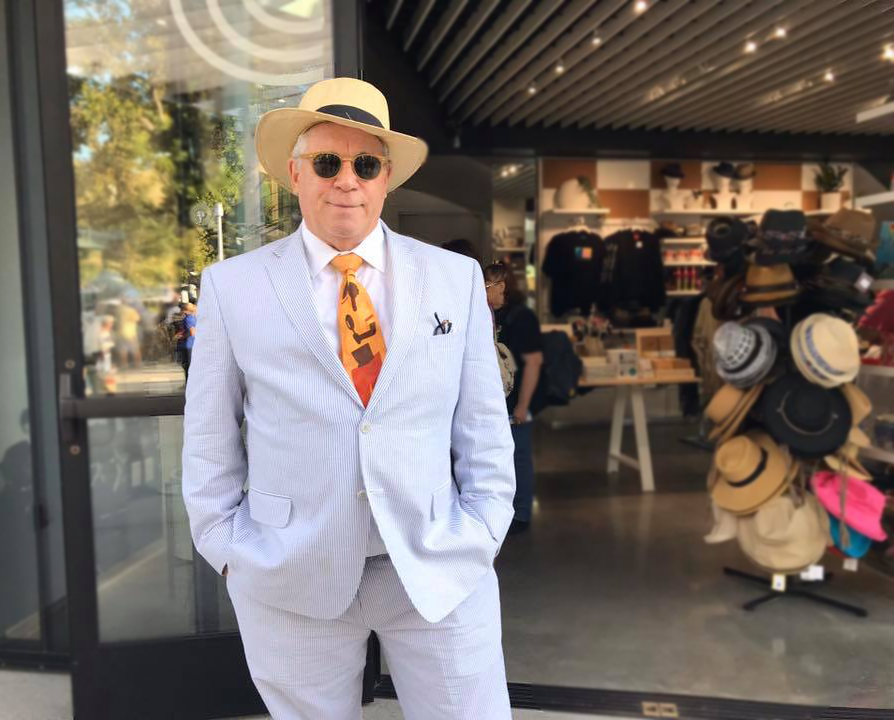
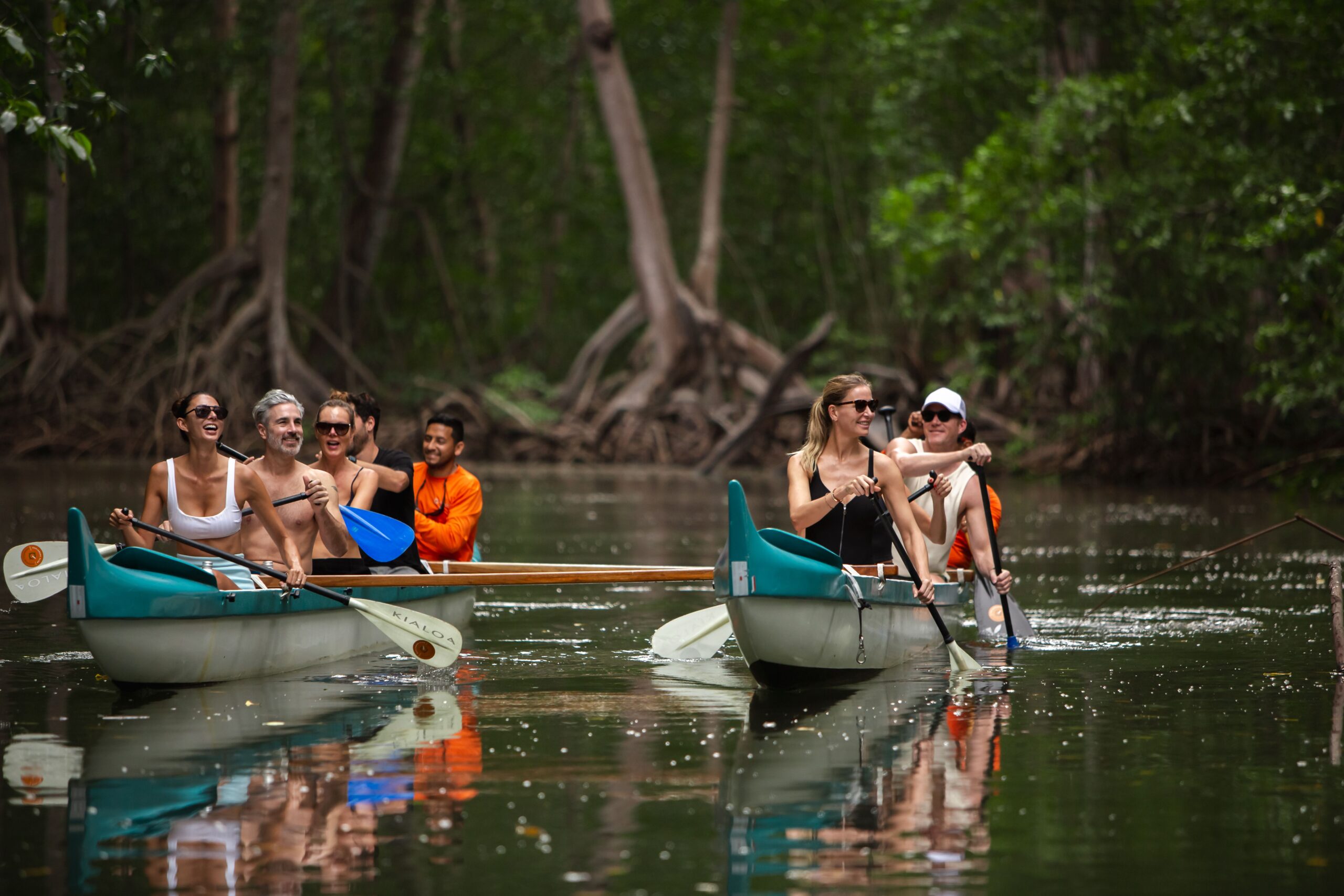
THE SUMMER TRAVEL GUIDE
Southern Californians, that means it’s time to break out of routine and hit the road—or runway. Whether you’re chasing cooler temps in the mountains, quick getaways along the coast, or bucket-list adventures across the globe, there’s no shortage of escapes. From Baja surf towns to far-flung cities, here’s where to go when the sun’s blazing and wanderlust hits.
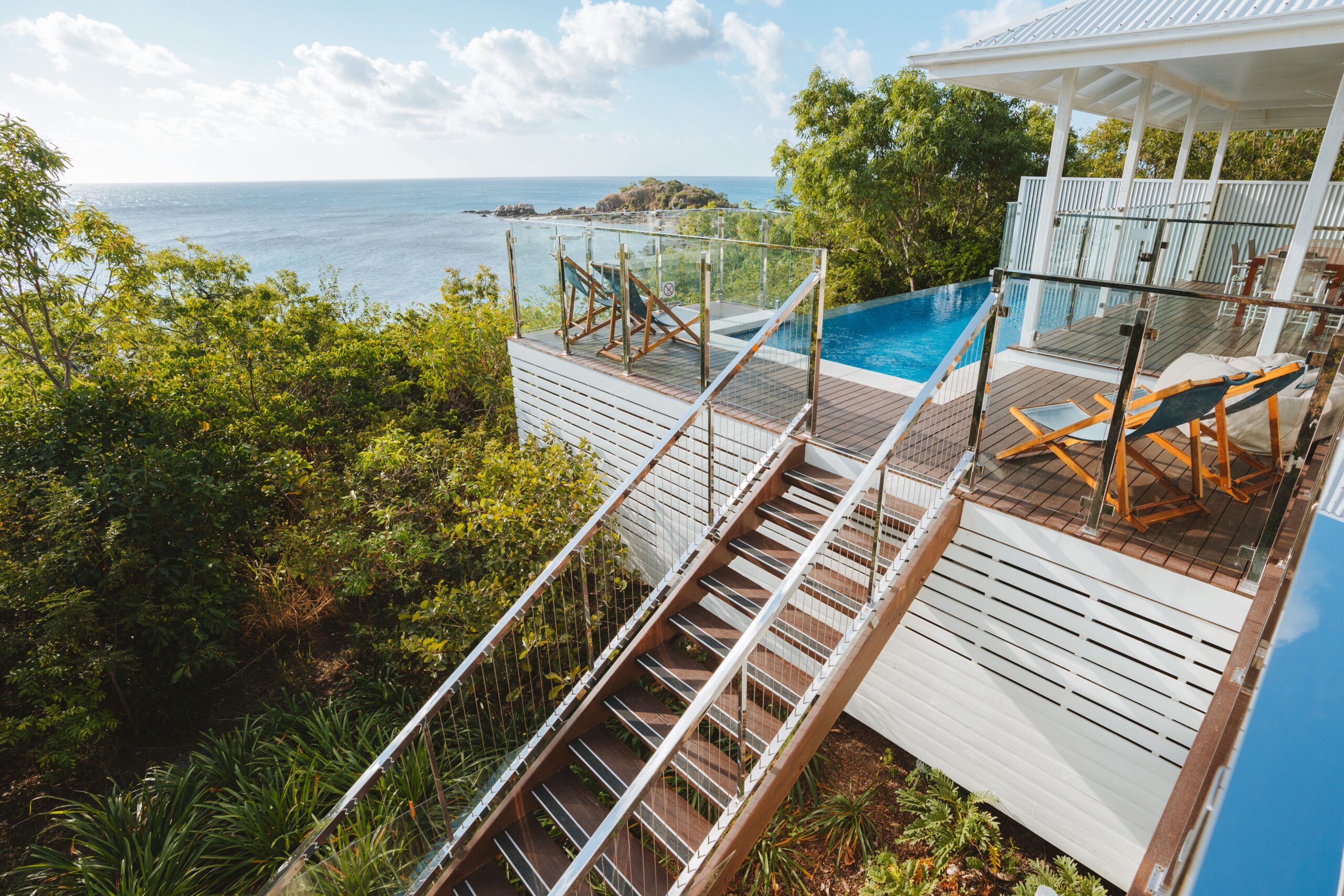
Lizard Island Resort \ Australia
As one of Australia’s most exclusive island retreats, Liz
Set within a 1,013-hectare national park and surrounded by 24 white-sand beaches, Lizard Island Resort offers a true escape—with just 40 rooms, suites, and villas, each only steps from the reef. While the resort is accessible only by scenic flight from Cairns or private yacht charters, the journey is part of the destination—and one that continues to reward those who seek the extraordinary. With increasing connectivity and direct flights from major U.S. cities—including Los Angeles, San Francisco, and Dallas—to Brisbane and, followed by a short domestic hop to Cairns, plus international direct flights from Singapore Airlines, Cathay Pacific and Fiji Airways into Cairns, reaching this remote corner of the Great Barrier Reef has never been more seamless for international travelers.
Luxury Accommodations
The resort features 40 elegantly appointed suites and villas, including:
-
Beachfront Suites: Steps from the sand, with private balconies or terraces
-
Oceanview Plunge Pool Villas: Private plunge pools and panoramic sea views.
-
The Pavilion: A secluded, hilltop retreat offering ultimate privacy.
-
The House: A luxurious four-bedroom residence ideal for groups or families.
Gourmet Dining
Culinary offerings at Lizard Island Resort are crafted with fresh, local ingredients and include:
-
Salt Water Restaurant: Overlooking the ocean, it offers daily changing menus inspired by Australian, Mediterranean, and Asian cuisines. Chef Matt Jenkins emphasizes seasonal produce in his creations.
-
Marlin Bar: A casual setting for evening cocktails and light bites.
-
Sunset Beachside Dining: An intimate, private dining experience on the beach with a personalized degustation menu and wine pairing. Reservations are recommended due to its popularity.
-
Gourmet Picnic Lunches: Enjoy a deluxe picnic on one of the island’s secluded beaches.
Exclusive Experiences
-
Private Beaches: Access to 24 pristine white-sand beaches, many with no one else in sight.
-
Water Activities: Snorkeling, diving, paddleboarding, and game fishing opportunities.
-
Essentia Day Spa: Offers organic Australian-made treatments and beachside yoga sessions.
-
Hiking: Explore trails leading to Cook’s Lookout for panoramic views of the island.
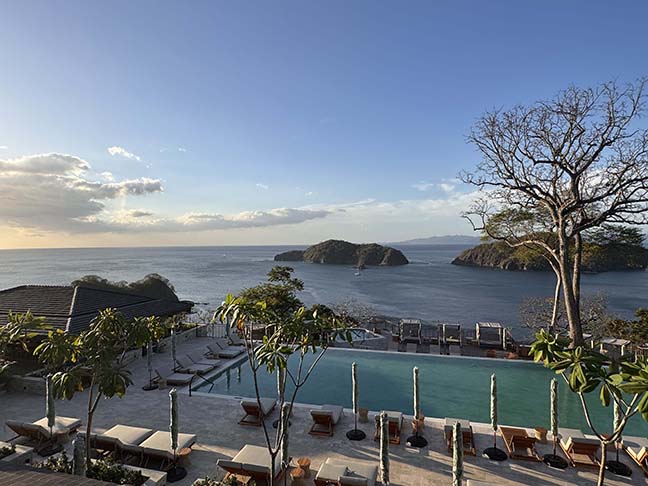
Andaz Peninsula Papagayo / Costa Rica
Summer approaches, and the idea of vacationing begins to take hold. Americans, in general, take 7–10 days off each year for international travel, and Mexico tops the list of favored destinations. Many Americans enjoy the concept of “bleisure” (where business and leisure are mixed), and it is growing in popularity. Another trend gaining ground is experiential travel, where immersive experiences (e.g., food tours, adventure travel) are favored over traditional sightseeing. From Los Angeles, Costa Rica is a five- to six-hour flight that passes over Mexico, Guatemala, Honduras, and Nicaragua. Costa Rica is a small country with no winter but many volcanoes. It is unique in that it has two coastlines—the Pacific Ocean and the Caribbean. Remarkably, the country runs on more than 99% renewable energy, mainly from hydropower, wind, and solar sources. It is a happy country. Its slogan is Pura Vida!, which means “pure life” and is used as a greeting, farewell, or expression of gratitude and positivity. Nestled in the lush northwestern region is Andaz Peninsula Papagayo, a stunning 1,400-acre luxury eco-destination in the Guanacaste province of Costa Rica. It is known for its pristine beaches, lush tropical forests, and world-class resorts. To get there, it’s best to fly into Liberia and drive along Highway 21 to the peninsula. To be clear, this is a luxury destination with sweeping tropical forests, stunning views of Culebra Bay and the Pacific Ocean, and the occasional sighting of howler monkeys. Andaz Peninsula Papagayo is one of the resorts on the peninsula. It is a resort with heart—sustainability is a major focus. Experiential activities abound, such as Papagayo Explorers, who provide epic eco-adventures with an expert team of naturalist guides. For more information: https://www.socalmag.com/travel-costa-rica/
and here
Dining at Andaz
Luna
A sophisticated restaurant with stunning views of the Gulf of Papagayo, Luna offers a menu inspired by fresh, local ingredients with a focus on Costa Rican flavors blended with international cuisine. It’s a perfect spot for breakfast, lunch, or dinner, featuring seafood, grilled specialties, and creative cocktails.
Pazzo
This lively Italian eatery serves up authentic Italian dishes with a modern twist. Guests can enjoy wood-fired pizzas, handmade pastas, and flavorful antipasti in a vibrant and welcoming atmosphere, making it ideal for casual dinners with friends or family.
Iguana Bar
Overlooking the beach, Iguana Bar is a relaxed spot for cocktails and light bites. With a breezy, open-air setting, it’s great for enjoying fresh ceviche, tapas, and tropical drinks while taking in the ocean breeze.
Pool Bar
Perfect for a midday refreshment or a light snack, the Pool Bar offers a variety of beverages and small plates. Guests can unwind by the pool with refreshing smoothies, fresh juices, and casual bites.
Dining at Andaz Peninsula Papagayo highlights fresh, local ingredients and a blend of Costa Rican culture with global culinary influences, all set within stunning natural surroundings.
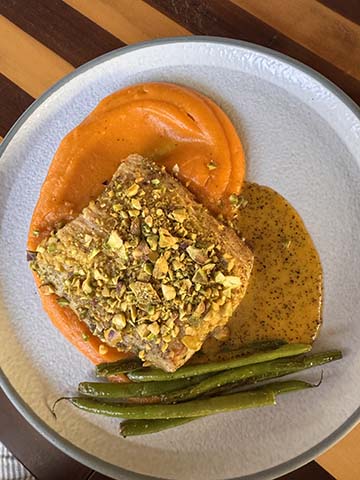
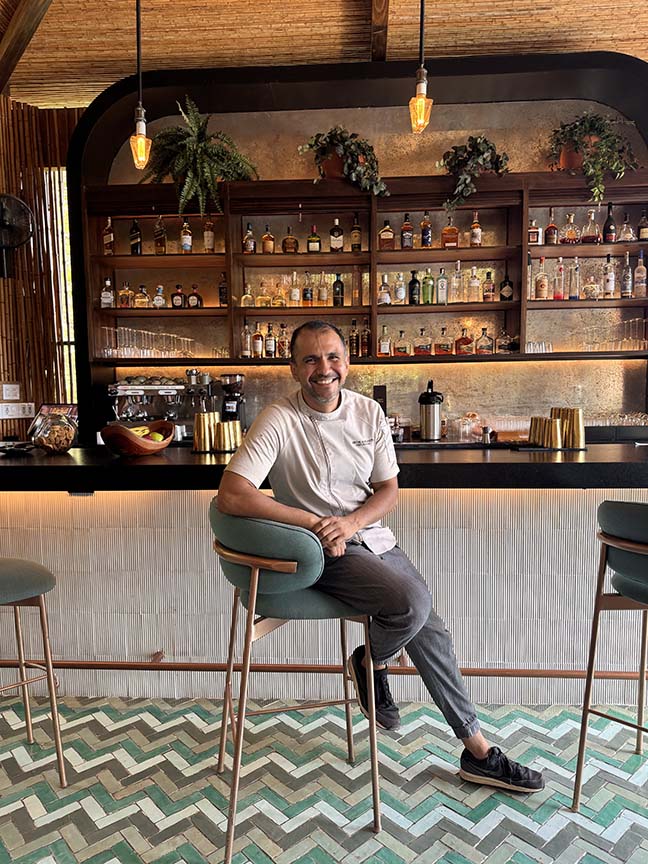
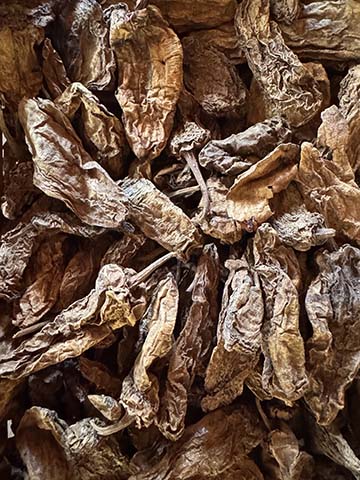
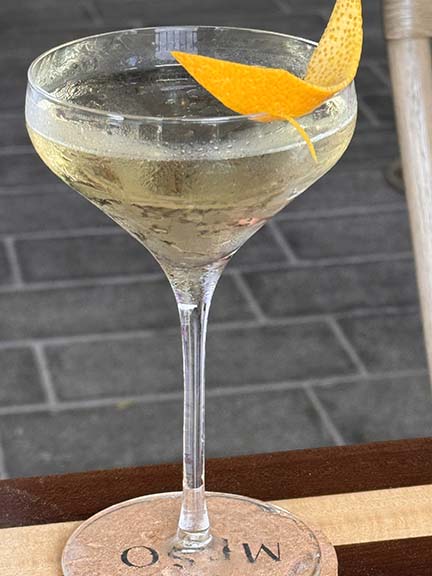
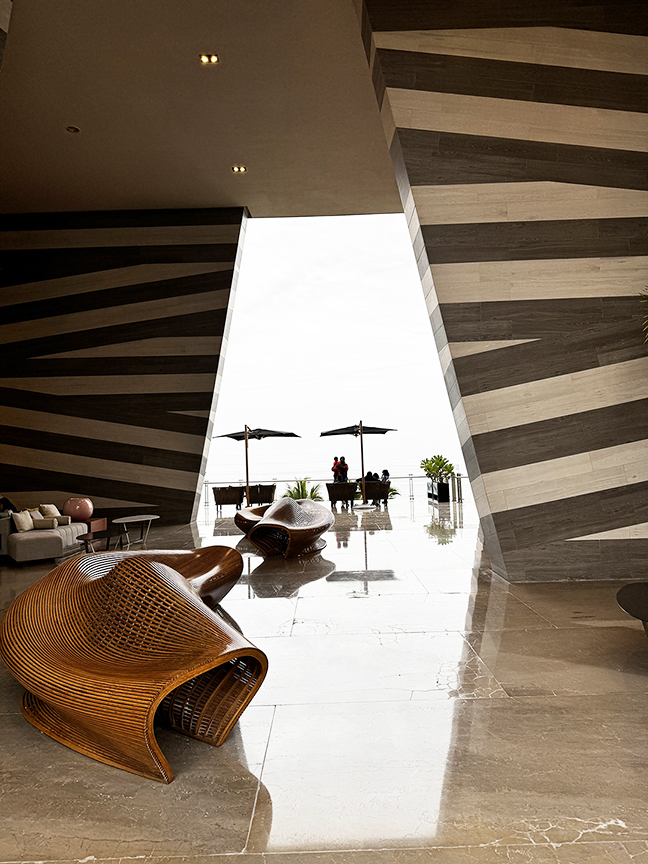
Grand Velas \ Los Cabos
Cabo is known for a few things: its vibrant nightlife, the Arch of Cabo San Lucas (the iconic rock formation at Land’s End), and its role as a major port of call for cruise ships. Like Mexico City, Puerto Vallarta, Cancún, Tulum, and—more recently—Holbox to the north, Cabo is a top destination for tourists.
From the airport, frequent shuttles make it easy to reach the heart of Cabo in under 30 minutes. As Highway 1 comes into view, the veil lifts: here, the Gulf of California meets the Pacific Ocean. Connecting San José del Cabo and Cabo San Lucas is the Tourist Corridor, a 33-kilometer (20-mile) four-lane highway framed by stunning desert vistas and sweeping views of the Sea of Cortez.
It’s along this scenic stretch that we find Mar del Cabo by Velas Resorts, one of three neighboring Velas properties. To the right stands the Grand Velas Los Cabos, a luxury all-inclusive resort. A short walk to the left is Grand Velas Boutique Los Cabos. Our stay is at Mar del Cabo, a boutique, adults-only hotel that welcomes pets and offers a more intimate atmosphere.
All three resorts were designed by Ricardo Elias, principal of Elias and Elias Architects in Guadalajara. Despite their proximity and shared pedigree, they each present a distinct personality: Mar del Cabo channels old-world charm with its lush entryways and gently sloping path to the sea, while Grand Velas Los Cabos greets guests with a bold, cinematic entrance that feels almost like a movie set.
Where to Dine
Cocina de Autor
Innovative Michelin-starred restaurant blending local ingredients with contemporary techniques for a refined tasting menu experience.
https://loscabos.grandvelas.com/dining/cocina-de-autor
Velas 10
Rooftop dining with panoramic views offering a curated gourmet menu, perfect for a romantic evening.
https://loscabos.grandvelas.com/dining/velas-10
Sen Lin
Elegant Asian fusion restaurant serving dishes inspired by flavors of the Far East in a serene setting.
https://loscabos.grandvelas.com/experiencia-culinaria/sen-lin
Flora’s Field Kitchen
Farm-to-table restaurant in San José del Cabo with organic dishes made from ingredients sourced from their own farm.
https://florasfield.com/dining
Acre
Modern dining in the Sierra de la Laguna foothills focused on sustainability and locally sourced ingredients.
https://acreloscabos.com

Grand Hyatt Scottsdale Resort
…and, if airports, luggage, passports, and in-flight meals have no appeal, there is always domestic travel.
It’s a short flight — just about an hour and twenty minutes — and even better, you can depart from the easygoing Bob Hope (Burbank) Airport. Soon enough, you find yourself descending into the beauty of the Sonoran Desert, where wildflowers, cactus blossoms, and vibrant greenery flourish beneath the wide, endless sky. Iconic Saguaro cacti are silhouettes along the horizon. From there, it’s a short drive to the Grand Hyatt Scottsdale Resort.
Opened in 1986 as part of the famed Gainey Ranch development — once a thriving Arabian horse ranch — the resort has recently emerged from a spectacular $115 million renovation. The grounds are lush, a paradise of tall, swaying palms and endless golden light. There’s an immediate sense of calm and quiet luxury that settles over you as soon as you arrive.
Wandering the expansive grounds, you notice playful stretches of astroturf where children laugh and run freely. Beyond that, a sprawling pool complex beckons, complete with private cabanas and even a white-sand beach area — a perfect playground for young adventurers.
The Grand Hyatt Scottsdale Resort blends Sonoran Desert serenity with the polish of a high-end resort. It’s big, bold, and unashamedly resort-y—but in all the right ways. Think palm-lined pools, open skies, and just enough Southwestern flair to remind you you’re not in Florida.
The Setting
Located in the upscale Gainey Ranch neighborhood, the Grand Hyatt Scottsdale Resort puts you in one of Scottsdale’s most desirable pockets. It’s quiet, green, and ringed by mountain views. You’re about 10 minutes from Old Town Scottsdale—close enough for a dinner out, far enough to escape the traffic and tourists.
The resort itself sits on 27 acres of manicured desert landscaping. with a large canvas agaunst a blue sky. Yes, it’s a little theatrical. But it works.
Rooms
The rooms are comfortable and clean, though not cutting-edge. Expect classic Southwestern tones—earthy palettes, wood accents, and big windows. Many rooms come with patios or balconies, and mountain or pool views. If you can, go for a room that faces Camelback Mountain at sunset—it’s worth it.
Pools & Play
This is where the Grand Hyatt Scottsdale Resort flexes: ten pools, including an adult-only area, a sandy beach for kids, a 3-story waterslide, and hot tubs tucked under palms. The pool scene is chill during the week and more lively on weekends.
The property also includes a 27-hole golf course next door, a full-service spa, tennis courts, and daily activities like yoga, Native American storytelling, and desert wildlife presentations. There’s plenty to do, but the resort doesn’t shove it in your face.
Food & Drink
Dining is solid across the board. Mesa Centrale, serves up breakfast and casual fare with regional flair. Grand Vista Lounge holds down the lobby scene with live music, cocktails, and a great fire pit area.
Who It’s For
This isn’t the spot for minimalist luxury or urban edge. It’s for families, couples, and conference-goers who want an easy, sun-drenched escape with everything in one place. You’ll see kids in the pool, golfers on the course, and couples at the spa—all coexisting comfortably.
Why Here?
The Grand Hyatt Scottsdale Resort delivers a classic, full-service Arizona resort experience. It’s polished without being pretentious, relaxed without being dull. If you want to enjoy the desert without roughing it—and still have enough amenities to keep you busy for days—it’s a strong choice.
10 Travel Safety Tips
1. Embrace Smart Travel Technology
- Digital IDs & Biometric Boarding: Many airports now support digital passports and facial recognition. Check if your departure and arrival airports offer this to speed up security and boarding.
- AI Itinerary Planners: Tools like Google’s AI-powered travel planner and AI-enhanced apps help personalize routes, suggest lesser-known spots, and optimize trip planning.
- eSIM Usage: eSIMs are now widely supported, making it easier and cheaper to stay connected abroad without changing physical SIM cards.
2. Focus on Sustainable Travel
- Carbon Tracking: Airlines and OTAs now show estimated carbon emissions for flights. Choose lower-emission options or carriers investing in sustainable aviation fuel (SAF).
- Eco-Stays: Look for hotels certified by credible sustainability standards like EarthCheck, Green Key, or GSTC.
- Slow Travel: Spend more time in fewer destinations to reduce environmental impact and enrich your experience.
3. Use Advanced Travel Apps
- AI Travel Assistants: Tools like Hopper, Kayak, and Expedia now use AI to predict price changes, recommend destinations, and handle bookings.
- Language AI: Real-time translation (via apps or smart glasses) is more reliable than ever—perfect for navigating non-English-speaking regions.
4. Be Aware of Evolving Entry Requirements
- ETIAS for Europe: Starting in 2025, non-EU citizens (including U.S., UK, Australia) need to apply for the European Travel Information and Authorization System (ETIAS) before traveling to the Schengen Zone.
- Vaccine & Health Pass Updates: Some regions may still request proof of vaccinations (COVID-19 or others), so always verify entry requirements before your trip.
5. Book Early – Especially for Popular Spots
- 2025 is seeing a massive rebound in travel, especially to Europe and Asia. Flights and accommodations are filling up months in advance, particularly in peak seasons.
- Dynamic pricing is more aggressive—booking 3–6 months ahead secures better rates.
6. Stay Informed on AI-Enhanced Customer Service
- Airlines and hotels are automating support using AI chatbots. Learn how to effectively communicate with these systems to solve issues quickly (e.g., lost luggage, flight changes).
7. Travel Insurance is a Must
- Opt for policies that include:
- Trip cancellation/interruption
- Medical coverage abroad
- Flight delays and lost baggage
- Some providers now offer “cancel for any reason” options, ideal for uncertain times.
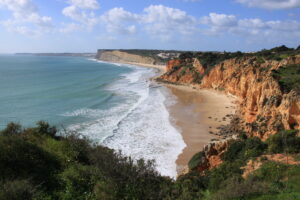
Where to go—Late SUMMER edition
Amalfi Coast, Italy
The heat mellows, cruise ship traffic drops, and villages like Positano, Ravello, and Amalfi shine in softer light. Expect warm seas and just enough bustle to keep it lively.
Greek Islands (Santorini, Milos, Crete)
September brings slightly cooler temperatures, calmer winds, and vineyards in harvest season — ideal for pairing beach time with cultural tours.
Iceland
Still long daylight hours, but with fewer tourists and the possibility of catching the northern lights late in the season. Great for hiking, waterfalls, and hot springs.
The Canadian Rockies (Banff & Jasper)
Crisper mornings, golden larches, and clear skies for mountain hikes. Wildlife is more active before winter sets in.
Portugal’s Algarve Coast
The beaches are less crowded, and coastal towns like Lagos and Tavira offer warm seas plus charming old-world streets.
Kyoto, Japan
Late summer brings festivals like Gozan no Okuribi in August, followed by a calmer September perfect for temple visits before the autumn foliage rush.
Provence, France
The lavender may be gone, but grape harvest season is in full swing, and the markets brim with late-summer produce.
Croatia’s Dalmatian Coast (Dubrovnik, Hvar, Korčula)
Warm Adriatic waters and lively harbor towns, minus the peak summer tourist crush.
Cape Town, South Africa
Late August–September is spring in the Southern Hemisphere — wildflowers bloom, whales migrate, and the weather warms without summer’s crowds.
The Azores, Portugal
Lush volcanic landscapes, whale watching, and mild weather — a great alternative to more touristy island escapes.

The Guide to Pick Pockets
Key Insights:
- Rome tops the list with 478 pickpocketing mentions per million visitors, particularly around major attractions like the Trevi Fountain and Colosseum .
- Paris follows closely, with 251 mentions per million visitors, notably around the Eiffel Tower and Louvre
- Barcelona is renowned for pickpocketing, especially on Las Ramblas, with 111 mentions per million visitors .
- London has seen a surge in phone thefts, with over 52,000 incidents reported in 2023, particularly in tourist areas like the City of Westminster.
Safety Tips for Travelers:
- Use cross-body bags with secure zippers.
- Avoid displaying valuables like jewelry or large amounts of cash.
- Stay vigilant in crowded areas and be cautious of distractions.
- Consider using money belts or hidden pouches for important documents and money.
If you’re planning to visit any of these cities and need more detailed safety advice or information on specific areas, feel free to ask!
Founded in the 2015 by Randy Dunbar, SoCalMag was envisioned as a fresh, sophisticated voice highlighting the culture, style, and stories of Southern California. From the start, the magazine embraced a blend of in-depth features, striking photography, and insider perspectives on art, travel, dining, and design.
As Founder and Editor, Dunbar shaped the publication’s editorial tone—balancing local authenticity with global appeal. Under his leadership, SoCalMag grew from a regional lifestyle magazine into a platform that attracts readers from across the country, all drawn to its curated take on the people, places, and ideas defining life in the Golden State.
Whether covering emerging artists in Los Angeles, luxury travel destinations, or the shifting trends in design and cuisine, SoCalMag continues to reflect Dunbar’s original mission: to tell meaningful stories with style, substance, and a distinctly Southern California sensibility.
Check it out: socalmag.com
Dunbar
randy@destinationsbydunbar.com


